Milan: Where the Hot Spots Are
- Oops!Something went wrong.Please try again later.
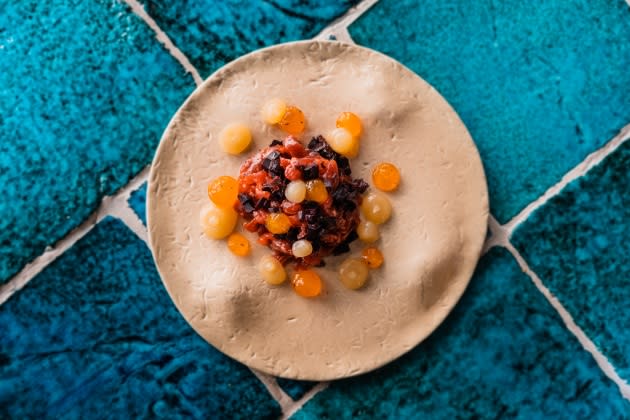
A wide selection of restaurants and a candy shop are ready and waiting to be discovered in Milan. But a lot of options are available for art lovers, too.
Confetteria Romanengo
The oldest artisanal candy shop in Italy, founded in Genoa in 1780, has opened its doors in Via della Caminadella, 23. The design project was entrusted to architect Filippo Meda and Madrid-based design studio Cousi Interiorismo. Together they were able to give a personality to each of the store’s three spaces.
More from WWD
One is the candy shop, from whose windows it is possible to see the specialties made using only natural ingredients, as per the traditional Genoese artisan recipe. These range from candied fruits to chocolates of all kinds, up to cinnamon, cardamom and even pistachio sugared almonds.
The other is the courtyard, which welcomes customers in a cozy environment in petroleum green and ochre. Here, fruit tarts, pains au chocolat and croissants are available, as well as salads or quiche for lunch.
Finally, the spice shop recalls Romanengo’s spice trading origins. The brick-red environment is reminiscent of the ancient shops where niches held various infusions of aromatic herbs and teas. Spices, ranging from curries to the exotic garam masala or hanout, are available here.
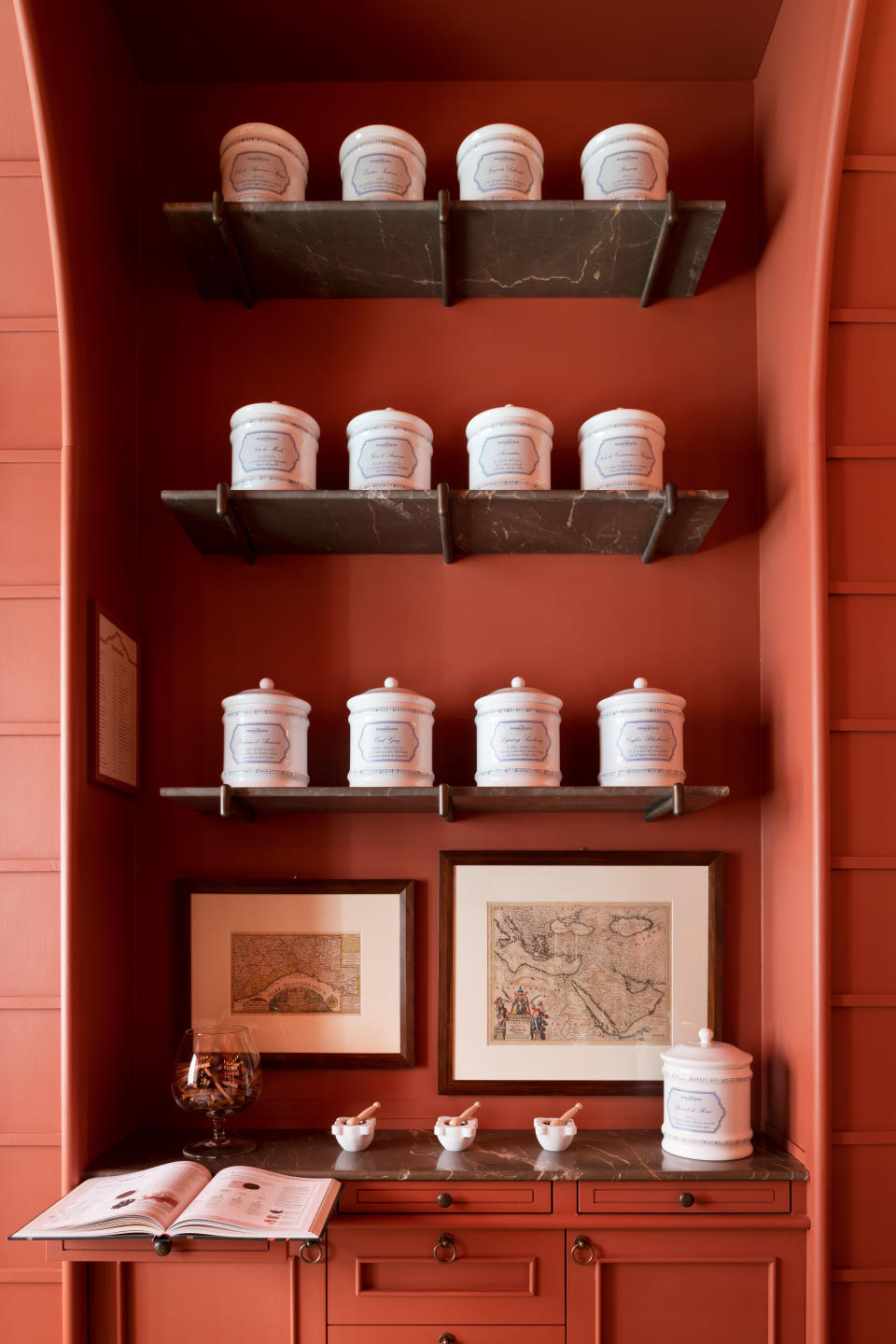
Confetteria Romanengo
Via Caminadella, 23 – 20123
02-72-02-1136
romanengo.com
Horteria
Horteria, the new spot in Via della Moscova, 24, is the result of research done by founders Giorgia Codato and Mauro Salerno. Both were raised aware of the importance of high-quality ingredients and of nutrition and, for this reason, the recipes follow the seasonality of ingredients. One of their suppliers is Domus Salerno, the founders’ farm located in Cilento, in Italy’s Apulia region. Among the dishes prepared by chef Roberto Cogni are the “Tartare di Fassona,” beef tartare with yolk jam, or “fianchetto di Cavallo,” horse beef, turnip greens and citrus fruit sauce.
The attention to detail extends to the wine list, which is presented on paper made from grape skins. Salerno observes that the aim is to explain to patrons what they are drinking, based on extensive conversations with the winemakers.
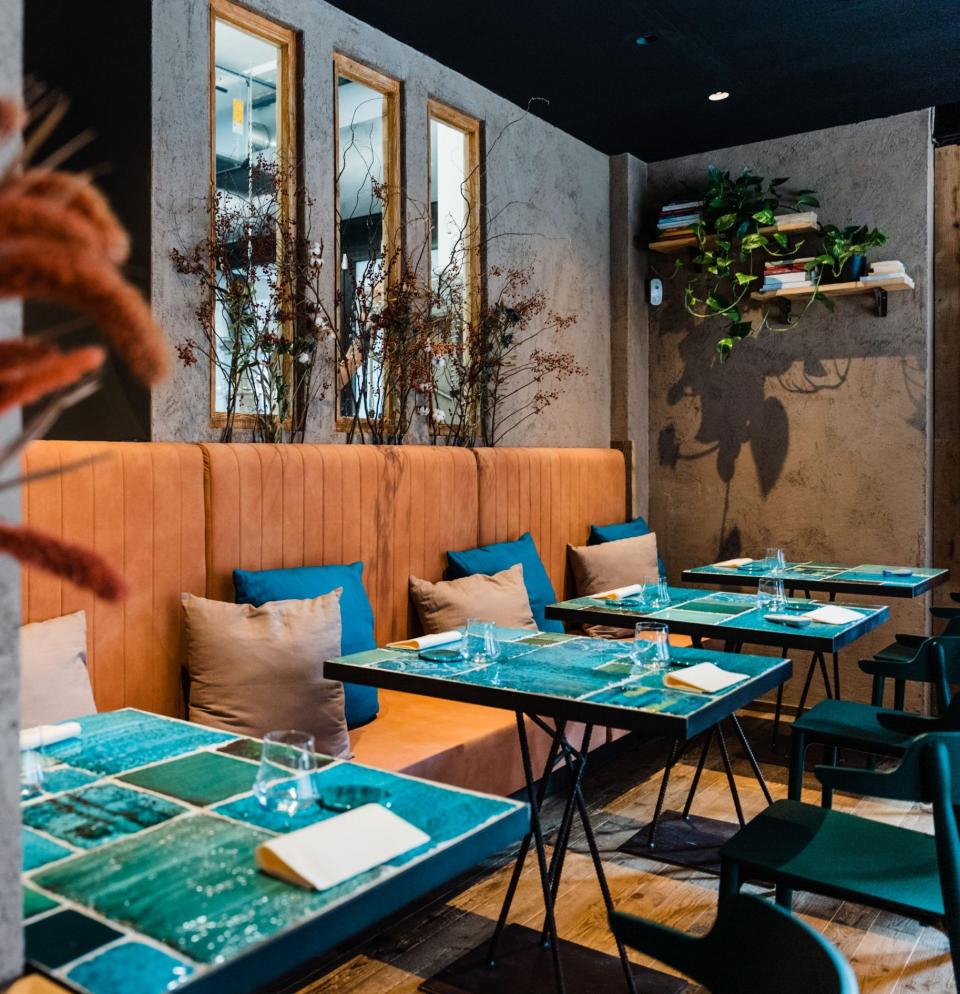
Horteria
Via della Moscova, 24 – 20121
35-34-41-9958
horteria.it
Osteria delle Coppelle
Rome-based restaurant “Osteria delle Coppelle” has arrived in Milan. The dishes extend from the Roman culinary tradition to foreign specialties, since chef Gianni Proli was born and raised in Rome but also honed his skills abroad, including in Spain. Indeed, one of the specialties is a typical plate from that country, the “Uovo rotto Patanegra” — literally, the “egg broken patanegra.” It’s made with boiled and salted potatoes, a slice of patanegra (an Iberian breed of pig) and fried egg, all to be tasted together with the “filone romano,” their homemade bread.
All the courses can be paired with wine, chosen from different origins, such as Gualdaltasso or the Super Tuscan, or with Champagne as well. The cocktail bar is one of the restaurant’s strengths as the owners of the restaurant also own the speakeasy Club Derriere, the bar next to “Osteria delle Coppelle” in Rome. A wide selection of whisky, mezcal and tequila, among other liquors, is available.
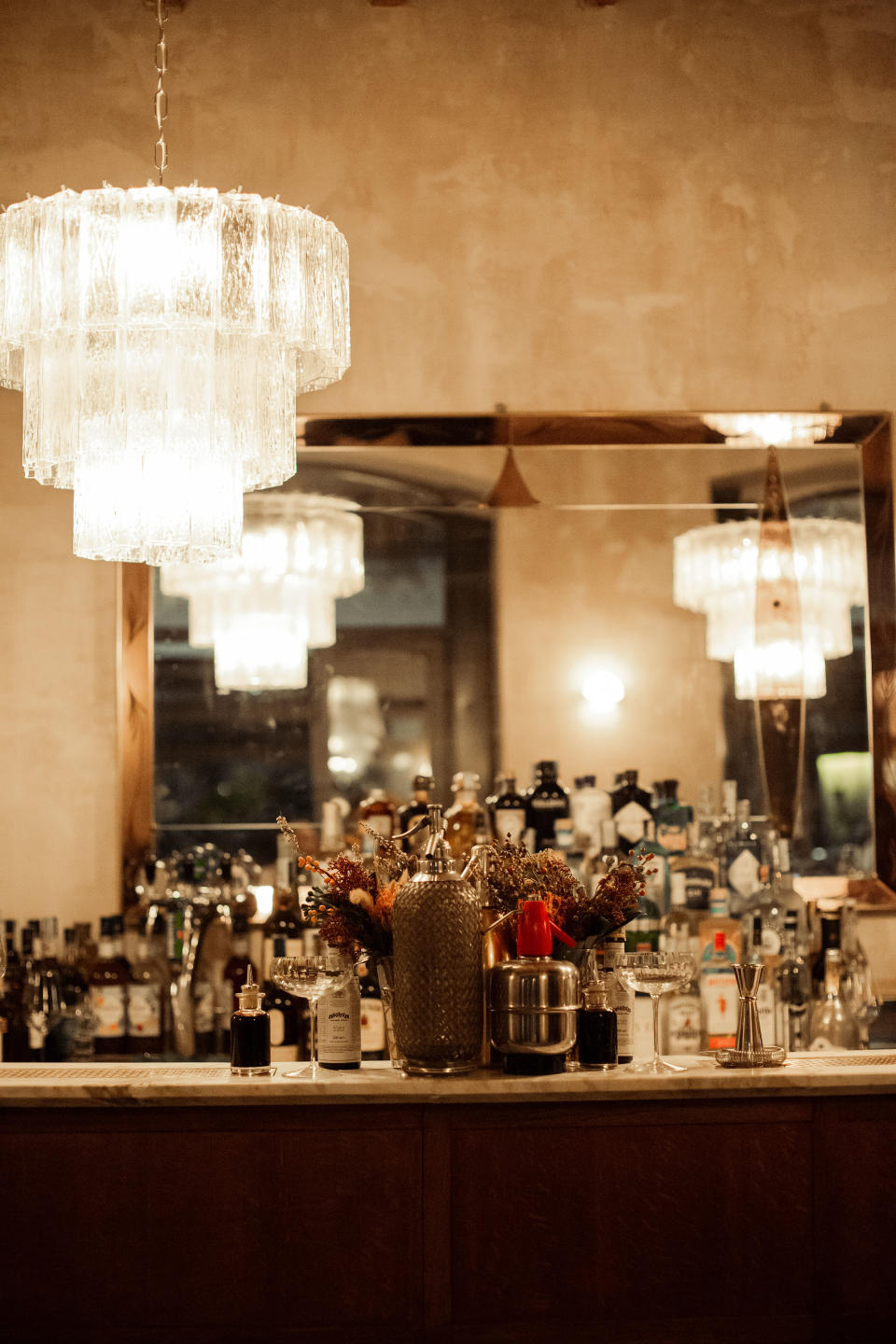
Osteria delle Coppelle
Via Solferino, 34 – 20121
02-36-58-4443
osteriacoppellemilano.com
Urban Hive
The former Carlyle Brera, a well-known hotel in Corso Garibaldi, has been transformed into the Urban Hive Milano. After a complete renovation, the four-star boutique hotel is made up of 97 rooms over seven floors.
The aesthetic of the hotel project, which is part of the Hively hospitality group, was overseen by the 150UP studio. Guests can choose between five types of rooms depending on their needs, such as the “Taylor Made,” with premium and high-quality devices, or the “Cosy,” perfect for a couple. In addition to the fitness area, which includes equipment from Nohrd and Technogym, for those who prefer to work out in privacy, a yoga mat and weights are available in every room.
Guests will also find a “pillow menu” where they can select the perfect solution to sleep, while the mezzanine where breakfast is served later in the morning is transformed into a coworking area with private meeting rooms available for guests.
Bartender Dom Carella, who is well-known on the Milanese scene, is in charge of the food and beverage offered at the hotel’s restaurant Portico 84.
The hotel was designed by architecture studio Vudafieri Saverino Partners. The main colors include terracotta pink, mint green and heavenly blue, while peacock blue was used for the common areas.
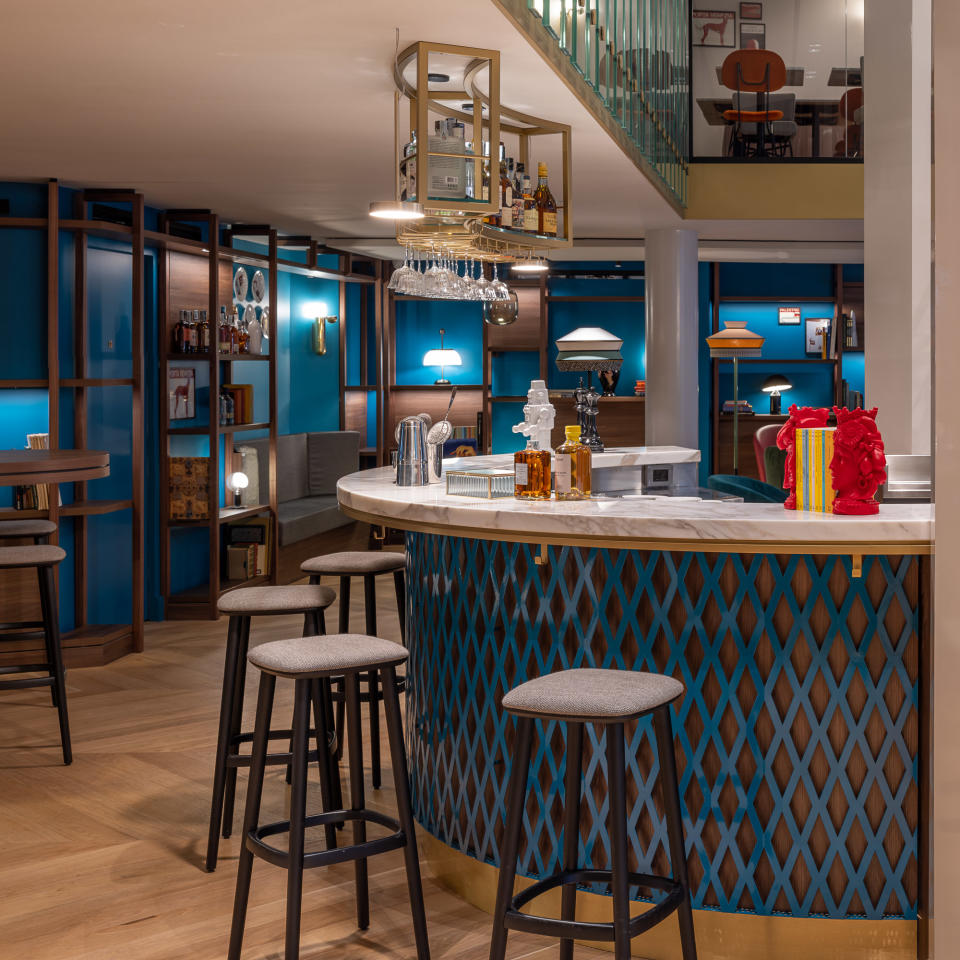
Urban Hive Milano
Corso Garibaldi, 84 – 20121
02-29-00-3888
urbanhivehotels.com
Corteccia Milano
Between San Babila square and the Duomo cathedral, in Corso Europa 1, Michelin-star chef Cristiano Tomei last month unveiled his latest project: Corteccia Milano. The self-taught chef offers both traditional Tuscan recipes but also revisits Milanese dishes. Of note are his tortelli with herbal oil, a typical recipe from Tuscany, where the chef was born. The restaurant, which seats around 70 guests, is also equipped with a private room where there is a portrait of the chef. “I have opened a place where you can eat dishes with a high density of taste, giving great importance to the recognition of the ingredients,” he says. The restaurant is run by a team drawn from the five-star luxury hotel Bauer in Venice, as well as sous chef Fabio Anello and food and beverage manager Giorgio di Nunno.
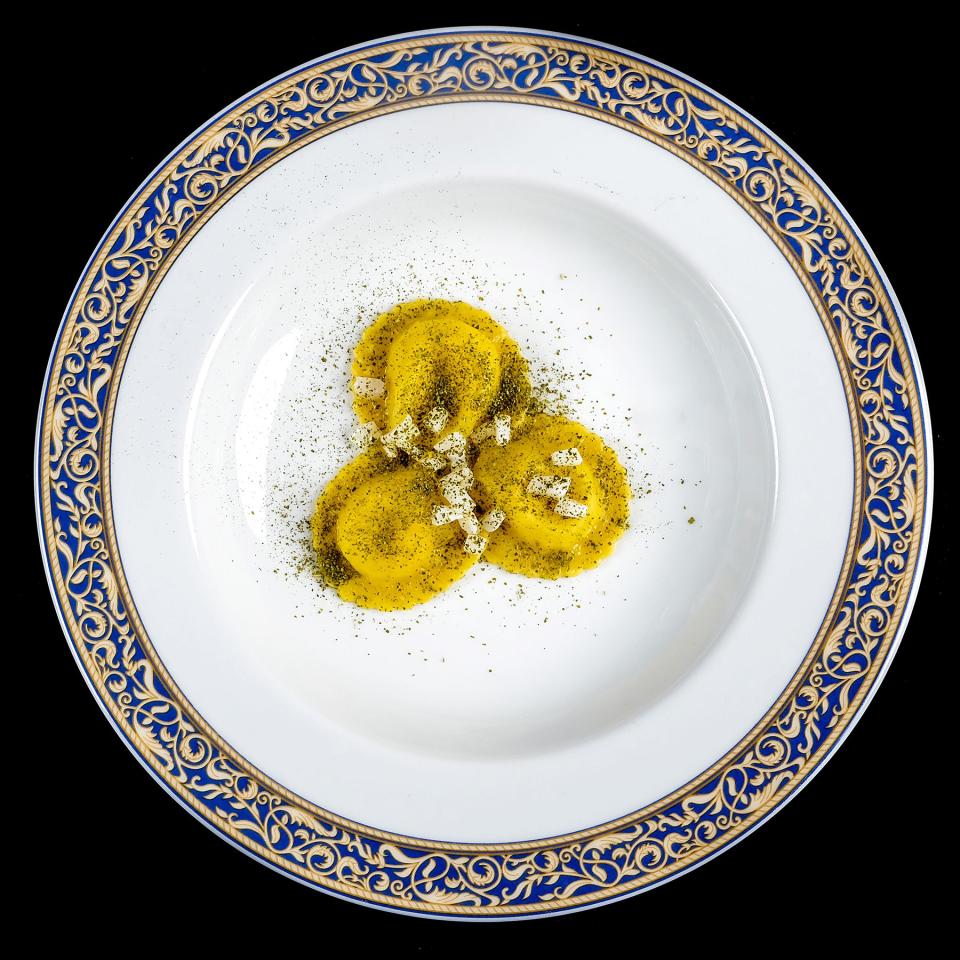
Ristorante Corteccia Milano
Corso Europa, 12 – 20122
02-30-56-2158
cortecciamilano.it
“Synthĕsis 1960-1970“
Open at the Balderi atelier of Iginio Balderi Archive until March 15 is “Synthĕsis 1960-1970,” an exhibition dedicated to photographer Gianni Turillazzi and his activity in the ’60s and ’70s. Born in 1939, he moved to Rome at age 25 to work as a photographer on the film sets of Italian New Vague movies. Thanks to this experience he met the most famous Italian actresses of that time that he shot for fashion works, from Virna Lisi to Gian Lollobrigida, and published by the most important magazines of that time, which led him to haute couture photography. He worked with brands such as Valentino, Fendi, the Fontana sisters and his images were published in American and Italian Vogue and Harper’s Bazaar. The exhibition, curated by his wife Rosanna Frassoni and Ivo Balderi, retraces the artist’s creative path in more than 50 photos from the Turillazzi archive. Renato Corsini, director of the center of Italian photography, says that “When Turillazzi interprets fashion, he does not limit himself to reproducing the garment worn by the model in the most conventional way, but goes far beyond and with the lights, with the choice of poses and backdrops, reflects the evolution of society.”
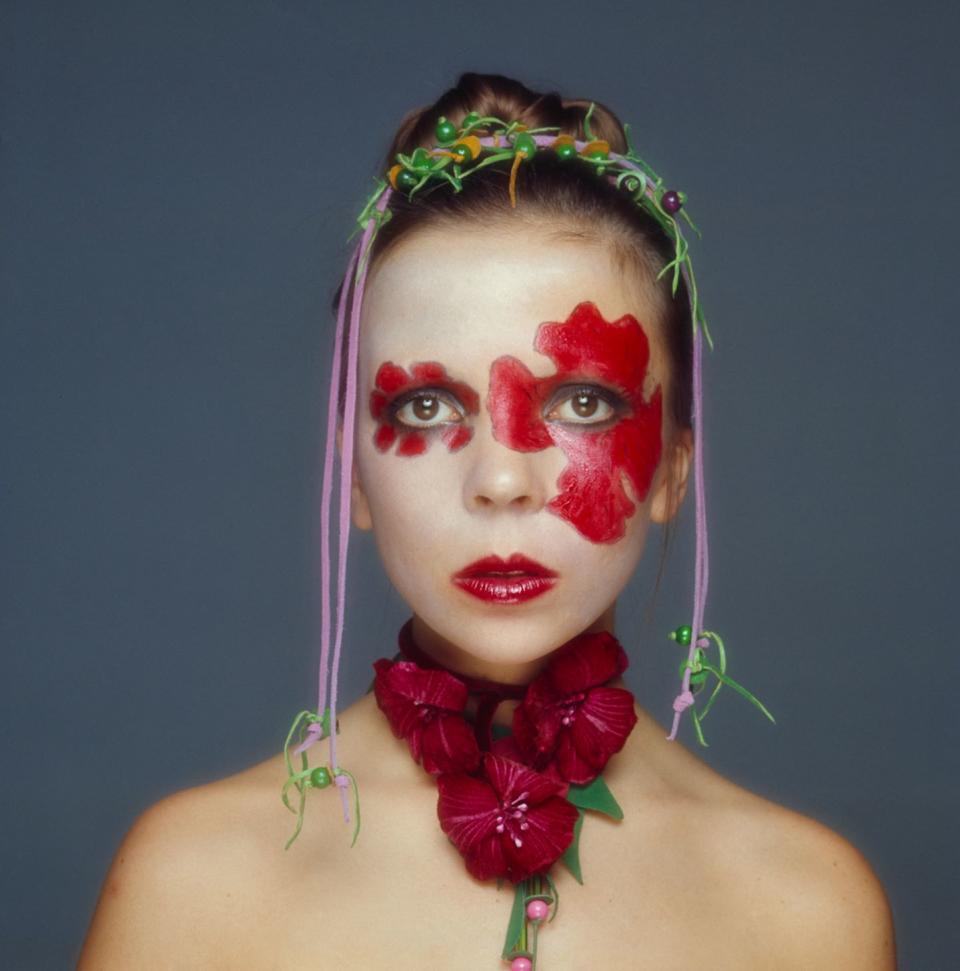
Archivio Iginio Balderi
Via Ausonio, 20 – 20123
34-70-46-6165
iginiobalderi.org
“Andy Warhol. La pubblicità della forma” exhibit
Fabbrica del Vapore, a space dedicated to cultural promotion, located in the district of Chinatown, is exhibiting 300 works by Andy Warhol until March 26, including not only some of his iconic pieces but also lesser-known ones. The show is divided into seven thematic areas and 13 sections retracing his career from the ’50s to the ’80s.
The first section is dedicated to his beginnings and advertising art on the New York scene, where he moved after graduating from the Carnegie Institute in Pittsburgh, followed by “Portrait of the society, between imagination and celebrity.” This revolves around the ’60s and Warhol’s Factory, which gathered everyone from socialites to celebrities such as David Bowie to Jim Morrison. In the ’70s those portraits became Warhol’s main source of income. Not to be missed is the section dedicated to his relationship with music in which are showcased serigraphics of Mick Jagger and Polaroids at Studio 54. The exhibition is promoted and produced by Comune di Milano – Cultura e Navigare and is curated by Achille Bonito Oliva with Edoardo Falcioni per Art Motors, Partners BMW and Hublot.
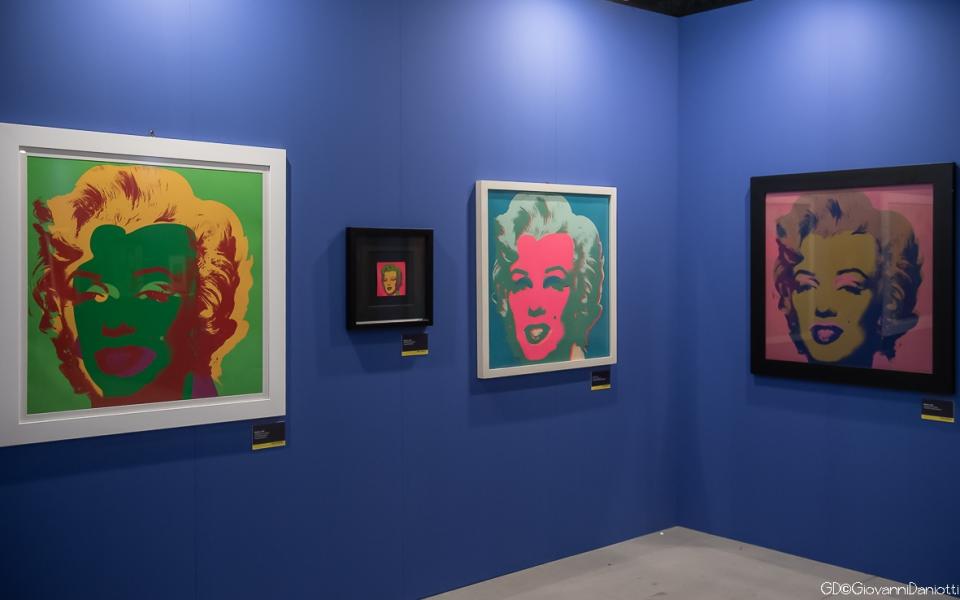
Fabbrica del Vapore
Via Procaccini, 4 – 20154
fabbricadelvapore.org
Best of WWD

